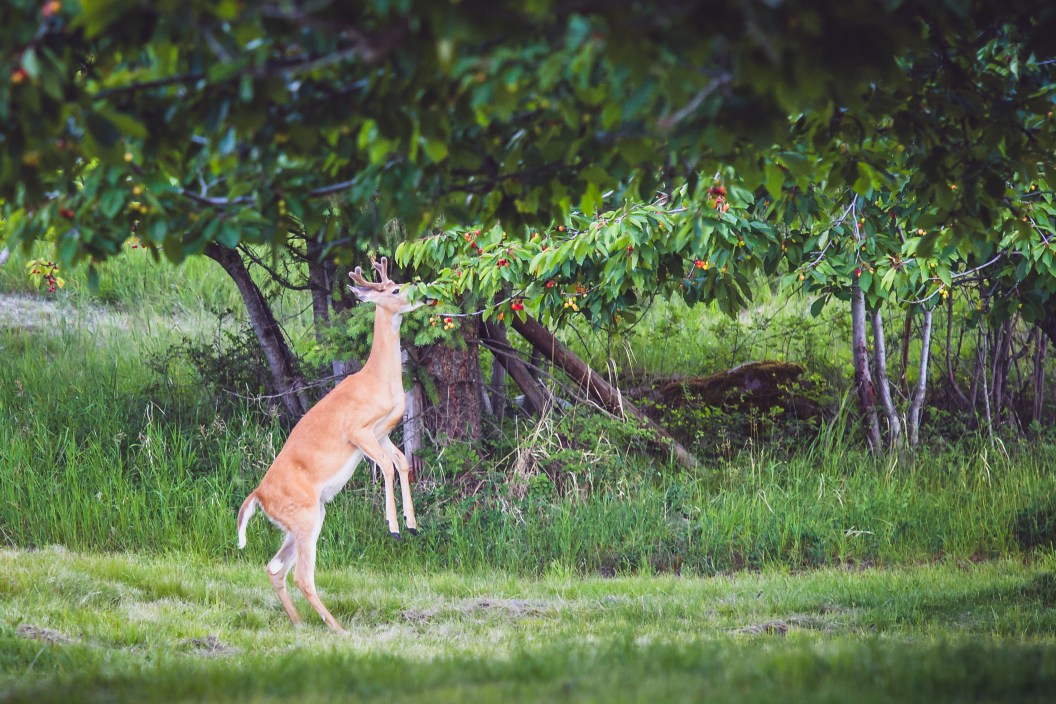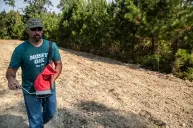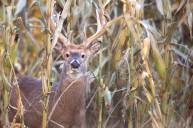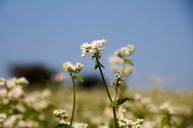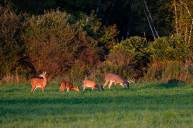Any hunter with a bit of land lives to attract game, big and small, to their property. There's a lot you can do to plant foot plots to attract deer, elk, and other wild game to come to you instead of your neighbor. And scouting bucks from several hundred yards out, watching them lift their velvet racks out of the beans in late summer would give any hunter a thrill.
Deers love an easily accessible and tasty food source. You don't need a ton of acreage or money to design an effective food plot that draws them in.
What is important is to establish food plots strategically and mindfully, considering deer habits, timelines, and preferences. The following four tips can elevate the food plot game for hunters.
1. Plant In The Middle of the Woods
Deer are naturally cautious animals and prefer areas with cover and concealment. Placing a food plot in the middle of the woods, away from open fields or other human activity, deer are more likely to feel safe and comfortable frequenting the area. Plus, this creates a more natural environment as deer are accustomed to foraging in wooded areas.
A food plot planted in a small clearing surrounded by a wooded area is referred to by many names: poor man food plot, hidey-hole food plot. The moniker used to describe this type of food plot often varies by region, but the premise is the same: Find or create a clearing in thick woods and plant greenery that deer like to eat.
Pick a spot that allows enough sunlight to come in and look for good drainage. You can use a chainsaw or garden rake to clear small trees and brush, exposing the soil for planting. It is optional to use a weed killer on these types of plots so that the plants you put down don't have to compete too much with the existing weeds.
In these types of plots, pick seed varieties that will germinate quickly, such as radishes, turnips, or winter wheat. Some seed companies offer special blends specifically for this type of plot.
2. Replant Brassicas Late In the Season
Deer love soybeans in an early season plot. But come late season, that land can go to waste in attracting deer. By the time the beans get cut, it's way too late to plant something new.
Try adding brassicas directly into the standing beans around the first week in August. It is a total game changer. The idea that seeds will germinate with a canopy of beans over it doesn't seem possible, but surprisingly it works great.
Try out varieties such as daikon radishes, purple top turnips and some variety of rape. After the beans are cut, there will still be an attractive green food source for the bucks to visit.
3. Plant Fruit Trees
Deer love to munch fruit trees, and while it may seem counterproductive to plant them near food plots, the opposite is true: Planting everything near each other can serve as a concentrated food source.
Consider planting apple trees, pear trees, persimmon, or whatever is native to the region.
But make sure to use some type of tree guard to protect them from wildlife, especially at their early stages. Plant trees in a row to achieve cross pollination. Personally, I like to add several fruit trees to my hunting plots just for the added attraction. Whitetail deer will notice the little things like that, and it will bring them back again and again.
4. Consider Nut Trees, Too
Trees that produce desirable nuts are also something to consider, although you're playing a long game there. They typically take several years before they produce high-quality deer food. However, it's usually worth the wait and effort. Chestnut trees, for instance, act as a deer magnet.
Oak trees are also a great option to consider, as acorns are a great food source for deer, especially in early season. The white oak acorn is the most desirable for deer, which can be identified by their oblong leaf edges and a narrower oval nut. One thing to keep in mind with oak trees is that it can take up to 50 years before they produce acorns. There are some options for hybrid oaks that produce much earlier, such as the sawtooth oak, which can drop acorns in as little as six years. So perhaps a hybrid for this lifetime and a traditional oak tree for future generations.
